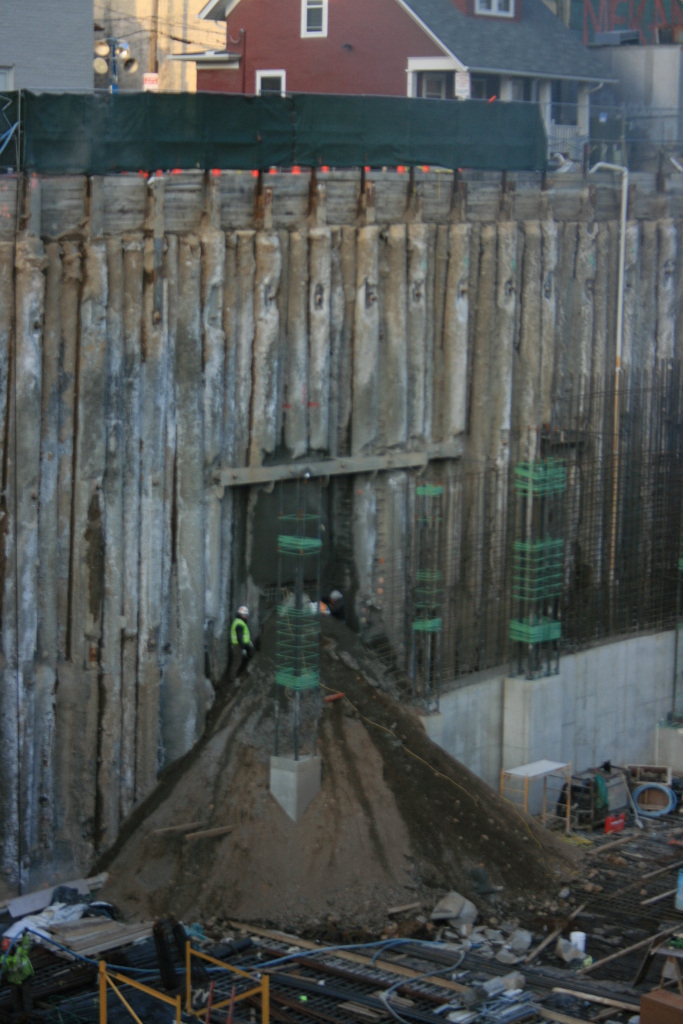
Photo Credit: Karl Jansen
Pictured here is a retaining wall constructed using steel. A retaining wall is used when there is a large elevation difference in a short horizontal distance. In this case, the pond on the left of the photo is much lower than the parking area on the right of the photo. Retaining walls hold back the earth for the higher land to remain stable from erosion.

